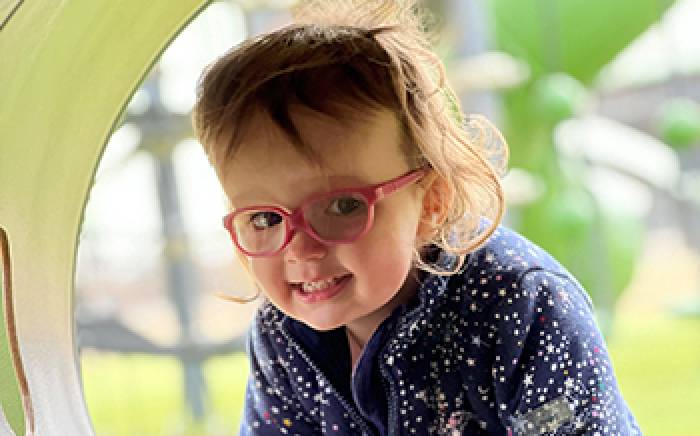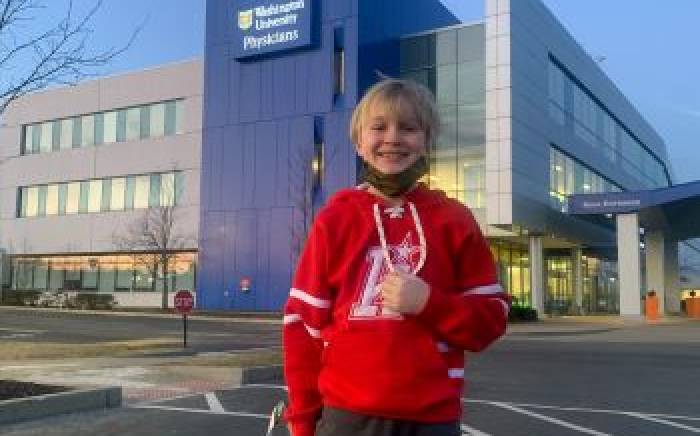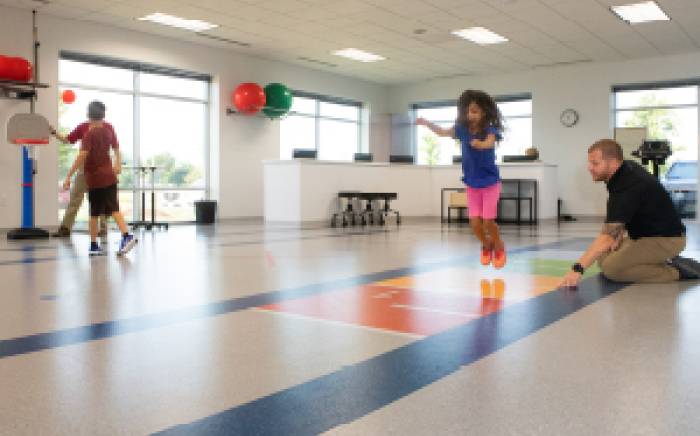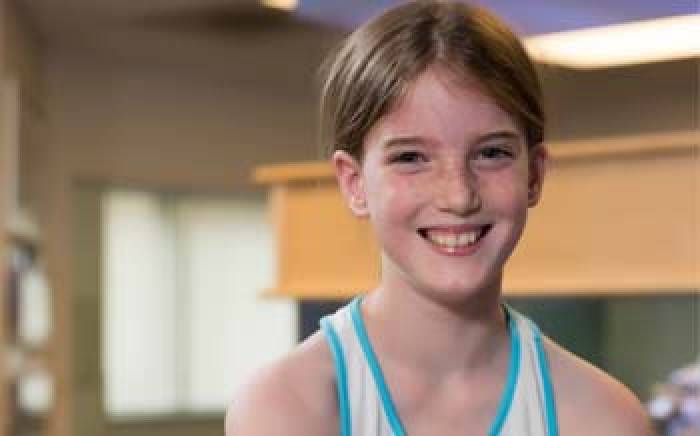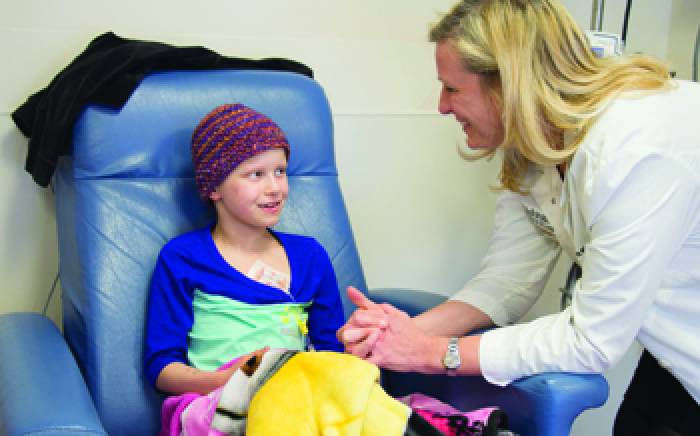This story originally appeared in the Summer 2022 edition of the St. Louis Children’s Foundation Magazine. Learn more about how donors make a difference and how you can get involved at any level!
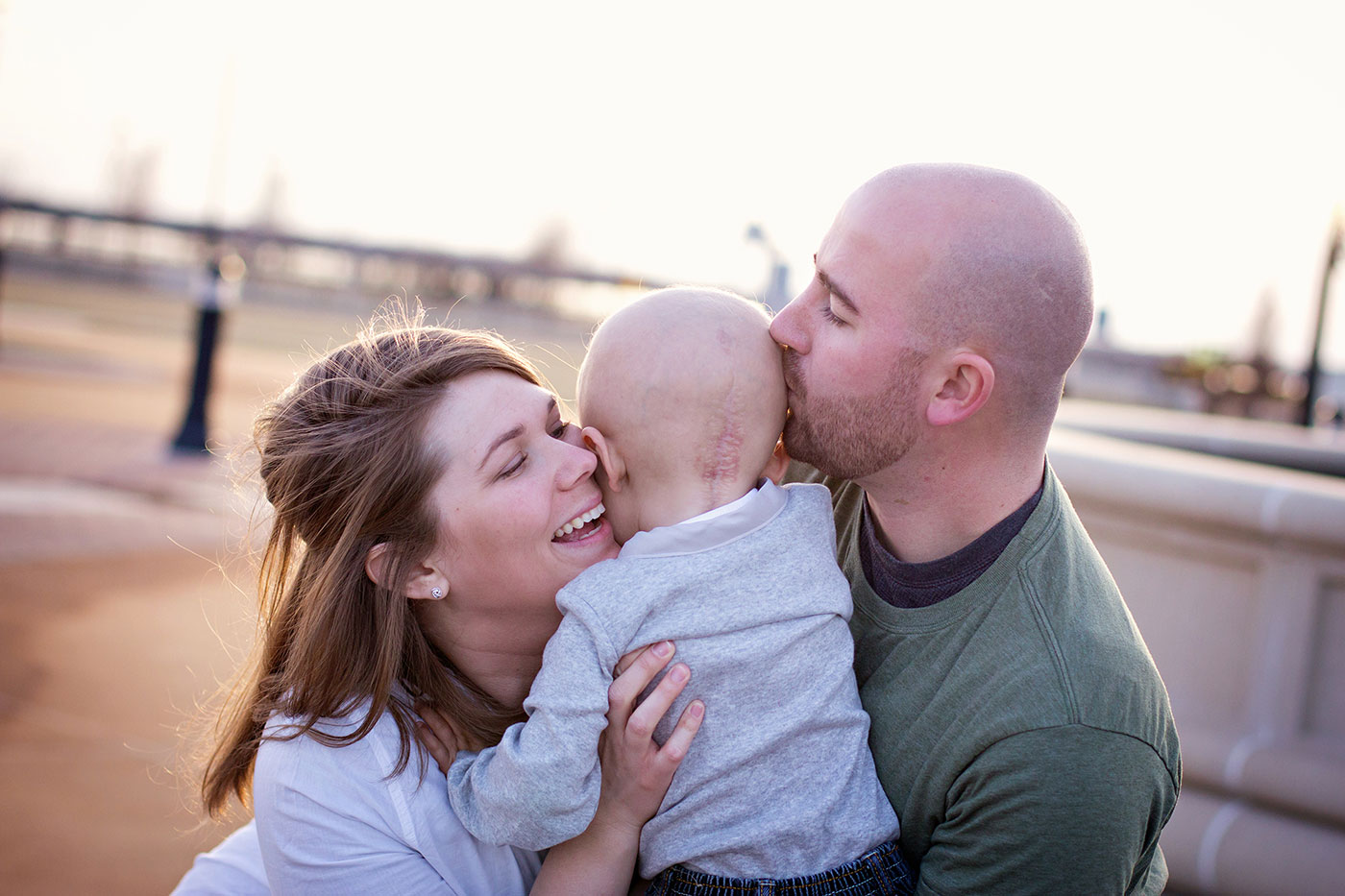
It was likely that Jack was born with the tumor that was discovered when he was just 15 months old. As a newborn, his mom says he was extremely unhappy. First-time parents Kellie and Rob were assured Jack was just colicky. He was their firstborn child, and his parents assumed it was normal and just hoped whatever was causing their son discomfort would resolve on its own.
Unfortunately, it lingered, and he got worse. Over Memorial Day Weekend in 2013, Jack was ill, unable to keep any food or liquid in his stomach including small sips of water. They struggled to find a diagnosis, and after a few weeks, Jack was sent to St. Louis Children’s to see a gastroenterology (GI) specialist.
The doctor’s first impression was that he was suffering from extreme dehydration, and Jack was admitted for further observation and care. After a full day of GI testing, the family was still without a diagnosis. The next day, a medical student at the time sat down and said he didn’t want to send Jack home and asked the family to provide anything else that might help them determine what was wrong with their toddler. Kellie remembered both Jack’s grandmother and babysitter mentioning his stumbling while walking and shared that seemingly inconsequential information. It was like a light bulb went off in the medical student’s head. Referring to the condition as a wobbly gait, the care team decided to send Jack for an MRI. After the procedure, a team of doctors came into Jack’s room and shared the findings were abnormal. Someone from neurosurgery would be in shortly.
That led to their first meeting with Washington University physician David D. Limbrick Jr., MD, PhD. He explained that Jack had a golf ball size mass lodged between his brain stem and cerebellum. The location was tricky — blocking the flow of spinal fluid causing Jack to develop hydrocephalus, which was fatal if left untreated. Within 24-48 hours, Jack needed to undergo brain surgery to remove the tumor.
Unfortunately, Jack’s first surgery didn’t go as planned. Dr. Limbrick’s team resolved the hydrocephalus but was unable to remove the tumor. After a few days of rest, a second surgery to remove most of the mass was successful. But what they thought would be a two-week stay at St. Louis Children’s turned into three months. Jack developed meningitis and after multiple rounds of antibiotics, Dr. Limbrick decided to go back in and thoroughly clean where the tumor was removed. After that third surgery, things were finally turning around. Jack was attending sessions with St. Louis Children’s physical, occupational and speech therapists while recovering. But as Jack was weaned off the medication, his fever started to spike. They had hit yet another roadblock. Dr. Limbrick assured Kellie and Rob that their son was in the best place possible and that a fourth surgery to remove the hardware placed in Jack’s skull during the first two surgeries was the best option.
That August, Jack was finally cleared to go home, with the family knowing he would need radiation therapy as part of his treatment plan. His official diagnosis was grade 3 anaplastic ependymoma. For six weeks, Jack visited Siteman Kids at St. Louis Children’s Hospital five days a week to receive sedated radiation. The family was offered placement in a study using chemotherapy as a secondary treatment due to the small amount of the tumor that was left in Jack’s brain because of its tricky location. The family was hesitant. They had seen loved ones go through chemotherapy and didn’t know if they could watch their son endure a similar course after he’d already been through so much. Initially the family decided not to enroll in the study, but after further discussion with Dr. Limbrick, who his parents say was a part of their family at that point, they changed their mind.
After six weeks of radiation, Jack underwent one round of chemotherapy each month from November to February — finishing right before his second birthday. The family could finally breathe. The treatments ended and the MRIs to ensure the tumor wasn’t returning began. Today Jack visits St. Louis Children’s to see a team of specialists that help with the late effects of cancer treatment along with his yearly scans. Radiation and chemotherapy are known to cause long-term survivorship issues including hearing loss, weight gain and chronic fatigue.
Kellie and Rob credit St. Louis Children’s Hospital with saving their son’s life and are thankful for the donor-funded physicians and scientists at Washington University and St. Louis Children’s, who strive to reduce the number of families who share the same story as Jack and his family.

